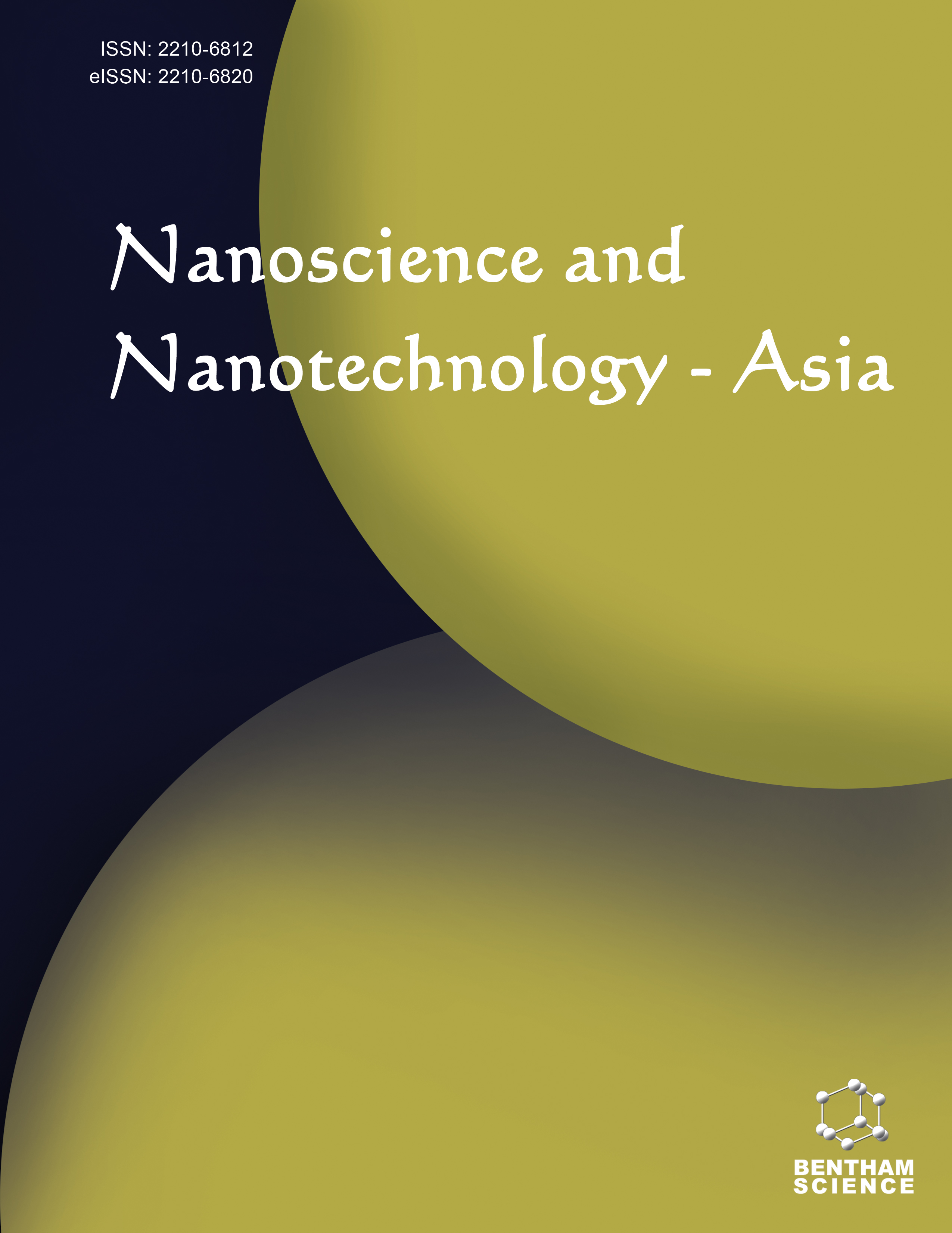- Home
- A-Z Publications
- Nanoscience & Nanotechnology-Asia
- Previous Issues
- Volume 14, Issue 4, 2024
Nanoscience & Nanotechnology-Asia - Volume 14, Issue 4, 2024
Volume 14, Issue 4, 2024
- Materials Science and Nanotechnology, Nanotechnology
-
-
-
Interaction between Enzymatic Detergent and Textile Metals/Metal Oxide Nanoparticles
More LessAuthors: Fateme Mirzajani and Nora MohseniIntroductionNanoparticles are used in industrial products, such as textiles, to induce novel properties, such as antibacterial, antistatic, UV blocking, self-cleaning properties, wrinkle resistance, and water and oil repellent. Moreover, using enzymes (protease, lipase, amylase, and cellulase) is widespread in detergent industries for washing conditions.MethodsThis research examines the interactions between m Read More
-
-
-
-
Cutaneous Lupus Erythematosus Treatment Revolution: Exploring the Latest Nano Lipid Drug Delivery Innovations
More LessAuthors: Kallepalli Surya Badarinadh, Shikha Baghel Chauhan and Indu SinghThis review article aims to explore recent advancements in the treatment of Cutaneous Lupus Erythematosus (CLE) by focusing on the innovative use of Nano Lipid Carrier formulations. It assesses the efficacy, safety, and potential therapeutic benefits of these novel formulations in managing CLE symptoms. A comprehensive search was conducted across various scientific databases, including PubMed, MEDLINE, and Google Sc Read More
-
-
-
Photocatalytic Activity of the Sb2O3/Ca5Al6O14 Nanoscale Composites for Crystal Violet Degradation
More LessAuthors: Zhangjie Ban, Zizhan Sun, Chenxi Cai, Zhengyu Cai and Lizhai PeiBackgroundThe discharging of crystal violet dye can contaminate water and soil, which causes serious environmental pollution and health problems for human beings. Sb2O3/Ca5Al6O14 nanoscale composites possess good catalytic performance for crystal violet removal. This study aimed to research the effects of the Sb2O3 content, content of the nanoscale composites, and metallic cations on the photocatalytic activity of th Read More
-
-
-
Green-synthesized Metal Nanoparticles for Cancer Diagnosis and Treatment: A Critical Review
More LessAuthors: Ravindra Waykar, Srinivasakumar Kumarapillai and Yogesh A. KulkarniThe utilization of chemotherapy remains an established therapeutic strategy in the ongoing fight against cancer. Nevertheless, it has been impeded by the occurrence of several fatal adverse reactions caused by non-specific toxicity often associated with chemotherapy. Nanotechnology is an emerging field of research that is experiencing rapid growth and is widely recognized as a highly promising approach for advanced canc Read More
-
-
-
Fabrication and Characterization of Andrographolide-loaded Microsponges to Enhance Oral Bioavailability of Drug against Colon Cancer Using HT29 Cells
More LessAuthors: Archana and Rohitas DeshmukhBackgroundThe current research aimed to determine ways to improve the bioavailability of andrographolide (AGP) for use in colon cancer treatment by developing and evaluating microsponges loaded with the drug.MethodsUtilising the quasi-emulsion solvent diffusion approach, microsponges containing AGP were synthesised. A total of ten formulations were prepared using different concentrations of drug, polym Read More
-
-
-
Green Synthesis of Iron Nanoparticles (FeNPs) using Aqueous Extract of Murraya koenigii Leaves: Synthesis Mechanism, Characterization Process and Antibacterial Activity
More LessIntroductionGreen synthesis is the method of producing metal and metal oxide nanoparticles from the extraction of plant materials. This study aims to synthesize iron nanoparticles (FeNPs) using an aqueous extract of Murraya koenigii leaves as an eco-friendly approach and subsequently characterize the synthesized FeNPs to understand their structural, morphological, compositional and optical properties.MethodsThe aqu Read More
-
Volumes & issues
Most Read This Month
Article
content/journals/nanoasi
Journal
10
5
false
en


